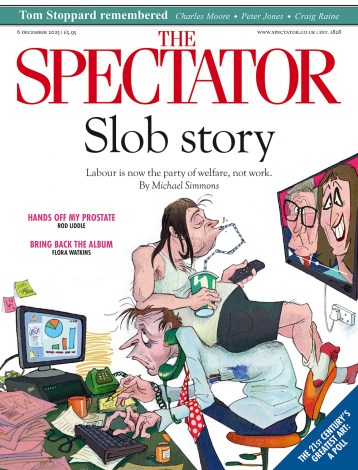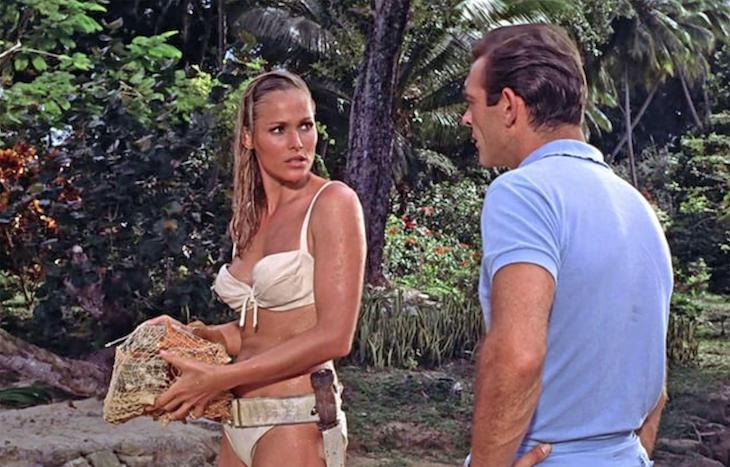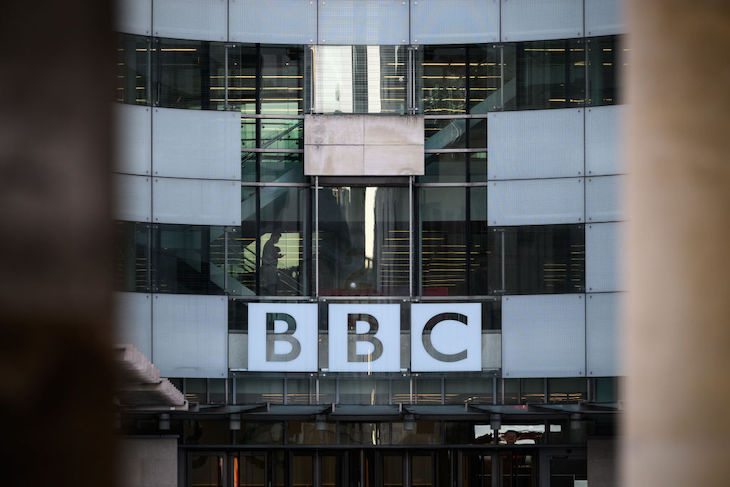As trigger warnings became fashionable over the last decade, many argued that they were artistically stifling, patronising, and even redundant given the fame of many of the works targeted. But it turns out there is a simpler objection: trigger warnings don’t work.
Amazon branded the Bond franchise with a range of cautionary messages
That is the finding of a recent study from Australia, which argues that the advisories are worse than useless. Not only did the authors find that a trigger warning failed to persuade 90 per cent of participants to consistently avoid potentially traumatic content on social media, in some cases it may have actually piqued their interest – with one mentally shaky fellow claiming ‘sometimes my brain wants to be triggered’, so the warning ‘grabs my attention more’.
As the authors write, with typically Antipodean directness, ‘trigger warnings are at best functionally inert and provide little therapeutic value’. Indeed, previous studies have shown that the warnings are themselves triggering, as any hypochondriac flicking through a newspaper’s health headlines would agree.
The growing body of evidence certainly contests the claim that trigger warnings give people a moment to emotionally brace themselves for whatever horrors lie beyond the fuzzed-out image. This has already proven to be misguided, and it’s likely to be doubly incorrect when it comes to the relentless avalanche of short-form video content that the kids like to stupify themselves with.
While it’s hardly empirical, earlier this year an intriguing report from the Guardian suggested that trigger warnings may actually amplify audience reactions to disturbing content. At showings of West End play The Years, a scene involving an abortion regularly led to audience members fainting and having to be carried from the auditorium, where a paramedic had even been put on call to revive them.
According to director Eline Arbo, each successive run of the play had been accompanied by increased warnings about the infamous scene, and in turn increased fainting fits. ‘My experience is that there’s more reactions than if you don’t have these,’ Arbo said.
As with many a social study, there’s an element of ‘well, duh’ to all of this. Anybody who was once a teenager could tell you that the British Board of Film Classification’s work is less a red flag and more a red rag to the average adolescent, calling attention to everything from argy bargy to rumpy pumpy.
That hasn’t stopped trigger warnings becoming an article of faith in academia, the arts and even certain corporate behemoths. Only a few days ago, it emerged that Amazon has branded its newly-purchased Bond franchise with a range of cautionary messages alerting viewers to the fact that a British spy from the 1950s was partial to drink, tobacco and womanising.
That followed news in September that City St George’s, University of London was warning students of contemporary genre fiction that some of the vampire stories on the syllabus depicted toxic relationships, the end of days, venereal disease, and mental suffering. Even Edinburgh Fringe audiences, who are supposed to be edgy, were apparently warned that a performance of Macbeth this summer contained ‘potentially triggering themes’.
It should be conceded that all of this is done with the best intent. While much eye-rolling at the cavernous empathy of avant-garde progressives is justified, many of these people are in fact nicer than you or me.
But as could be said of much woke politics, they are also fundamentally mistaken about human nature, as any journalist could attest. The old news mantra of ‘if it bleeds, it leads’ is not the work of devilish hacks eager to bring low the human race, but a comment on what captured attention centuries before Jack Dorsey announced to the world that he was ‘just setting up my twttr’.
Children and adults alike have always revelled in details of the disturbing, the sordid and the profane. By contrast, every positive news venture has ended up as a flub, unable to steal attention from whatever grotesque is on the front of the tabloids. Even the boffins have conceded that negative news is what sells, the result of thousands of years of apes living longer after overreacting to bad news.
In the case of trigger warnings, that’s paired with what the soulless ghouls at clickbait farms refer to as the ‘curiosity gap’, and what everyone else calls ‘clickbait’. While it may be deadly to felines, much of the internet’s growth has been driven by the apex primate’s insatiable desire to know what is over the horizon, or for us drab moderns what spicy content has been obscured by a filter and a warning label.
That is not going to change. Nor are any future studies into trigger warnings likely to conclude that they are fantastic tools to prevent unnecessary distress among sensitive souls. And though it won’t be accepted by the artsy folk who continue to issue warnings against the expert consensus, the rest of us can at least call it: trigger warnings are clickbait, not care.







Comments